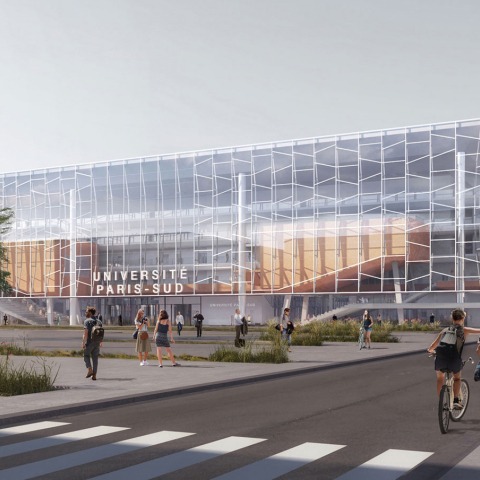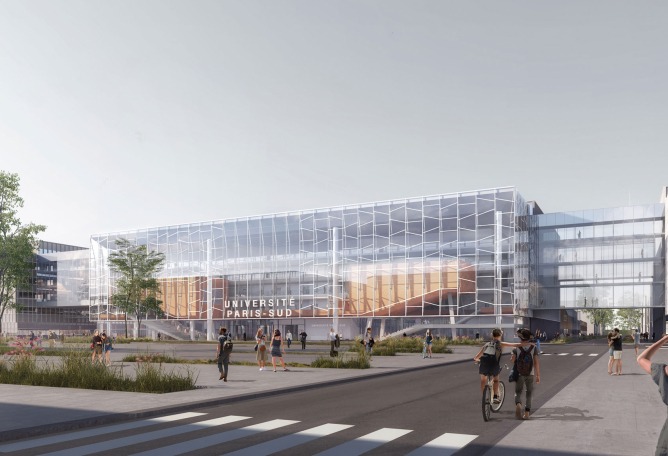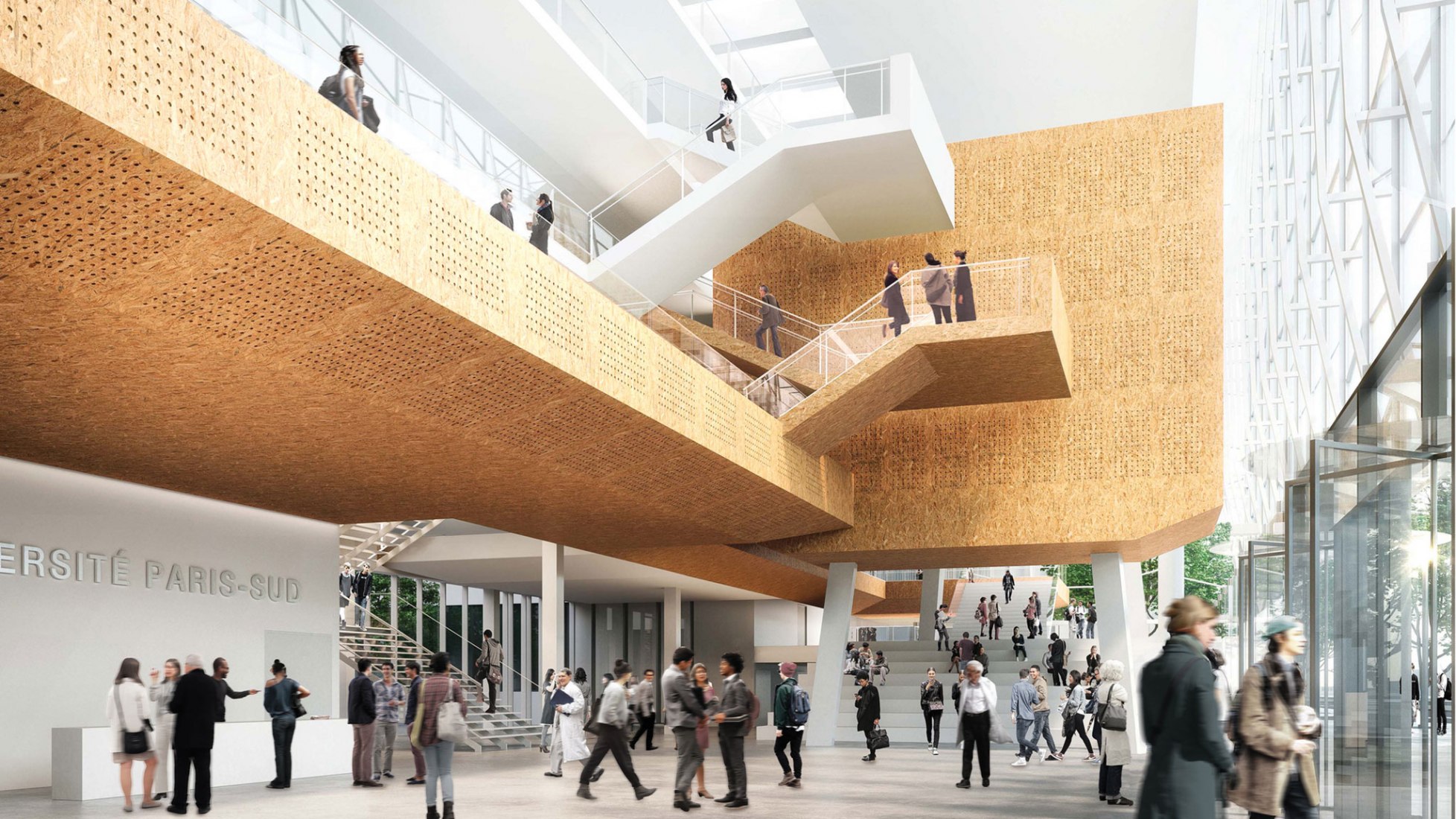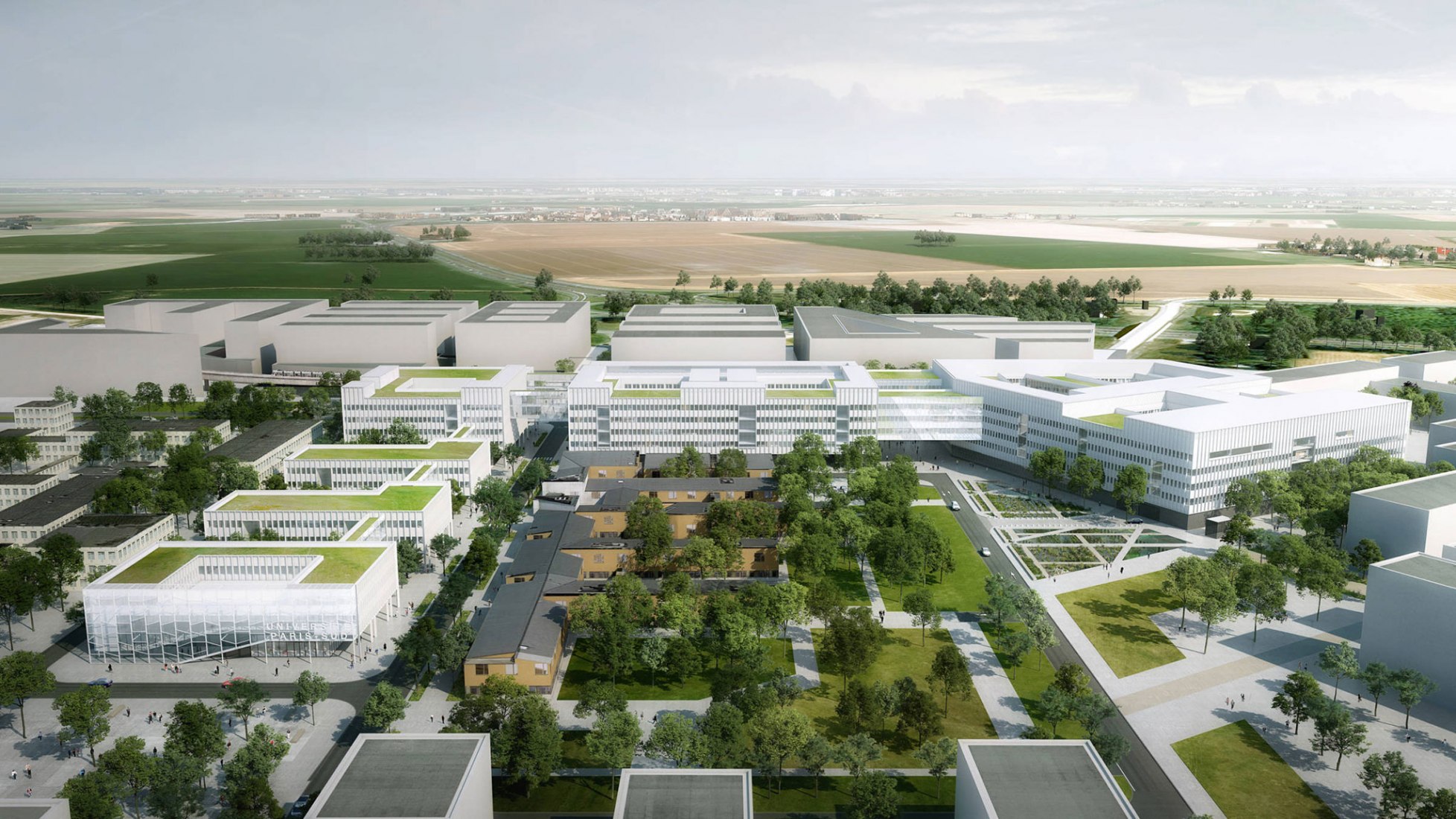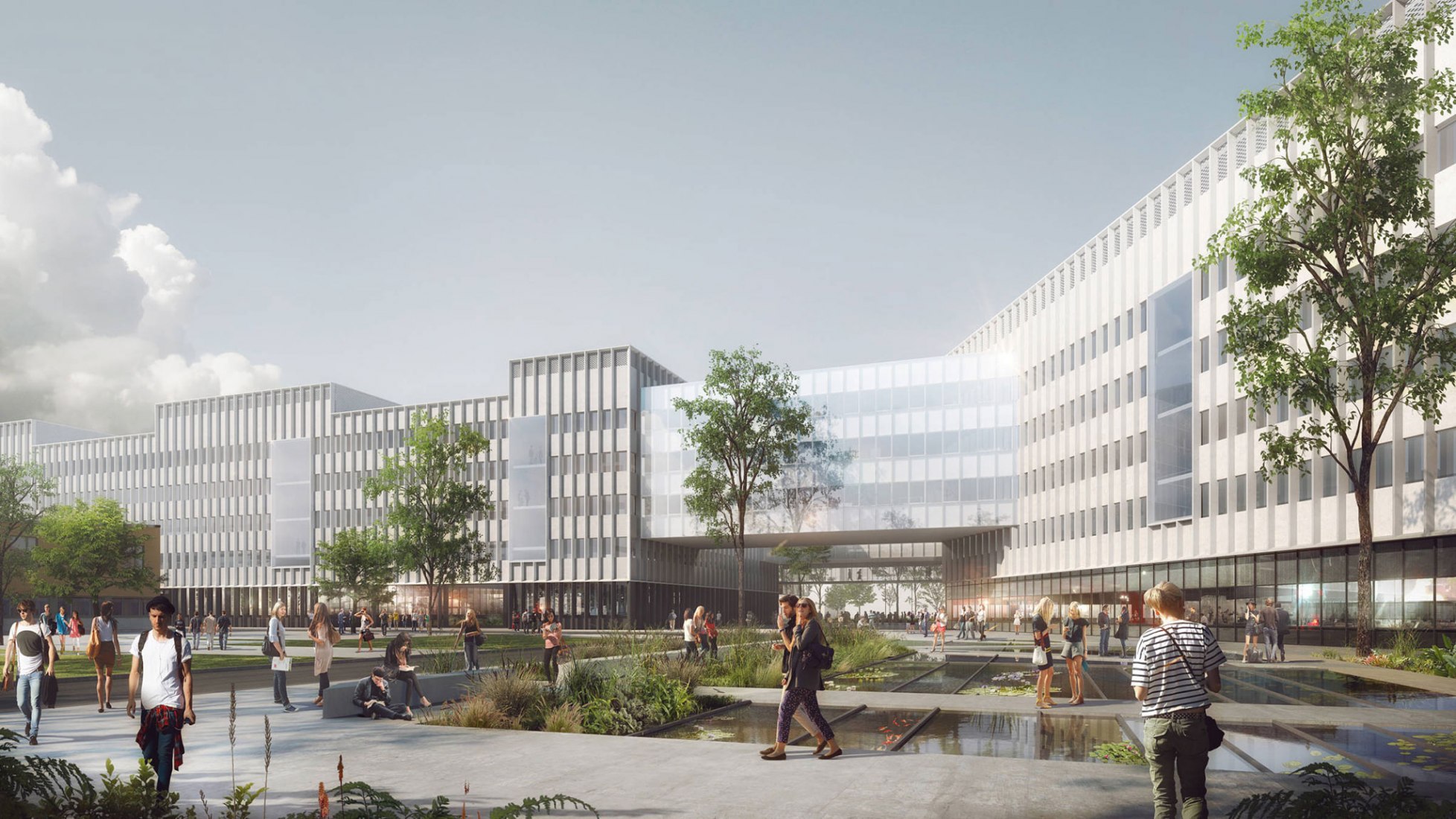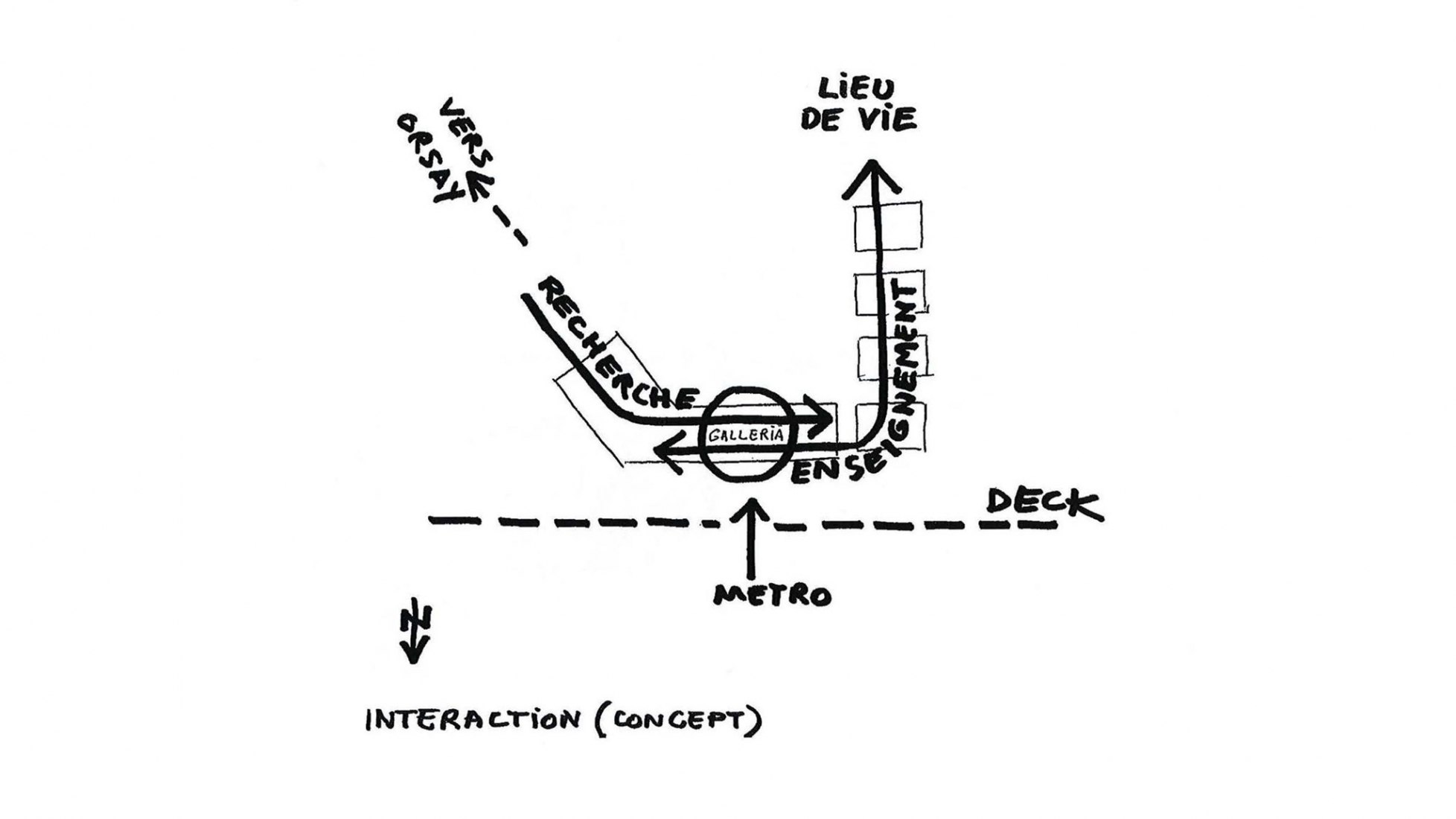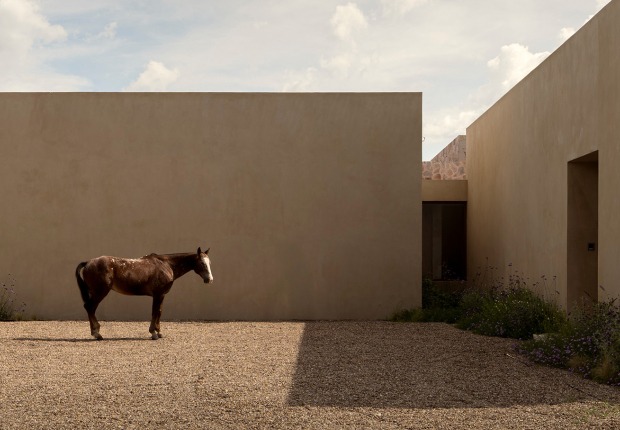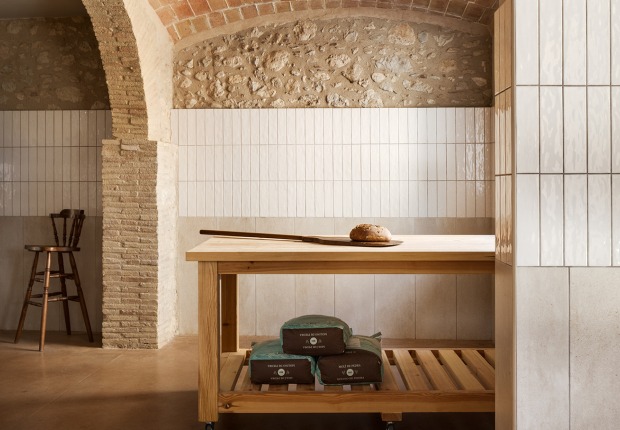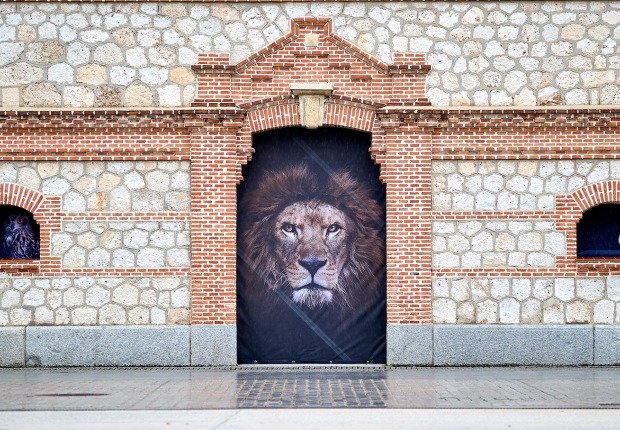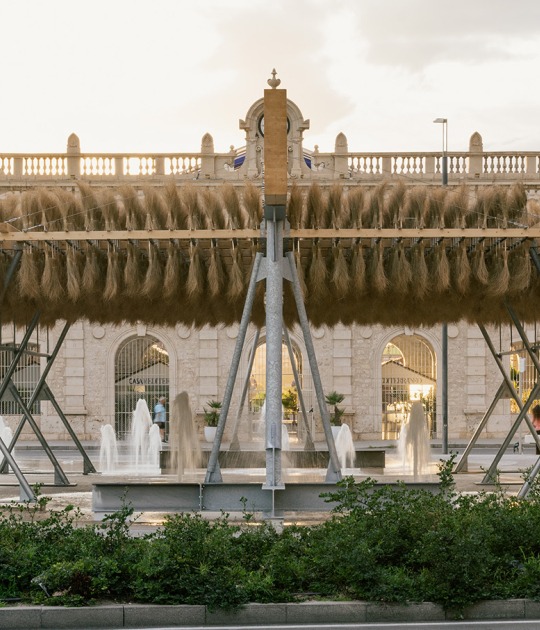A gateway to Paris-Saclay Located north of the Le Moulon plateau, next to the future Orsay-Gif station on the Grand Paris Express, the centre will be the new gateway into the Le Moulon joint development zone and the Paris-Saclay campus. The “METRO Center” will form part of the biology, pharmacy and chemistry wing of the university, comprising six buildings connected by flying bridges, featuring teaching facilities, research labs, offices, restaurants, and logistics areas.
The winning entry emerged victoriously after a more than two-year-long competition process that included Bouygues Construction and also roposals by Herzog and de Meuron with Vinci Construction, and MVRDV with Eiffage.
Description of project by Bernard Tschumi Architectes
This public-private partnership, or PPP, resulted from a competition process involving three of Europe’s largest construction firms and associated architectural teams: Bernard Tschumi et al with Bouygues Construction, Herzog and de Meuron with Vinci Construction, and MVRDV with Eiffage. The competition lasted two and a half years, with precise client requests including a complex program and tight cost-control and energy-saving requirements.
The architectural concept of the METRO site, coordinated by Bernard Tschumi Architects, consists of a chain of six separate but interlinked buildings that act as an interior street, a common denominator, and a social space for the whole complex, joining together three different scientific disciplines.
Facing north, a fully glazed building opens onto the main axis of the site and acts as the heart of the complex. It includes social spaces and auditoria, a small museum, administration, and applied research facilities. To the east are research laboratories; to the west lie teaching facilities and the southern access-point of the site.
All facades opening to the north and all connecting bridges are fully glazed, while the south, east, and west facades are made of high-quality white precast-concrete panels with fins.
The scale of the different parts of the complex varies depending on their functions and their locations on the site. For example, the glazed facades on the main campus axis are 25 meters high (approximately 82 feet) and incorporate six levels, but the volumes located near small existing constructions have been designed with three levels each.
The project was developed simultaneously in both of Bernard Tschumi’s offices: BTA in New York (Joel Rutten, co-director) and BTuA in Paris (Véronique Descharrières, partner and co-director). Groupe-6 was charged with the interior organization of the research component, a major part of the complex.
